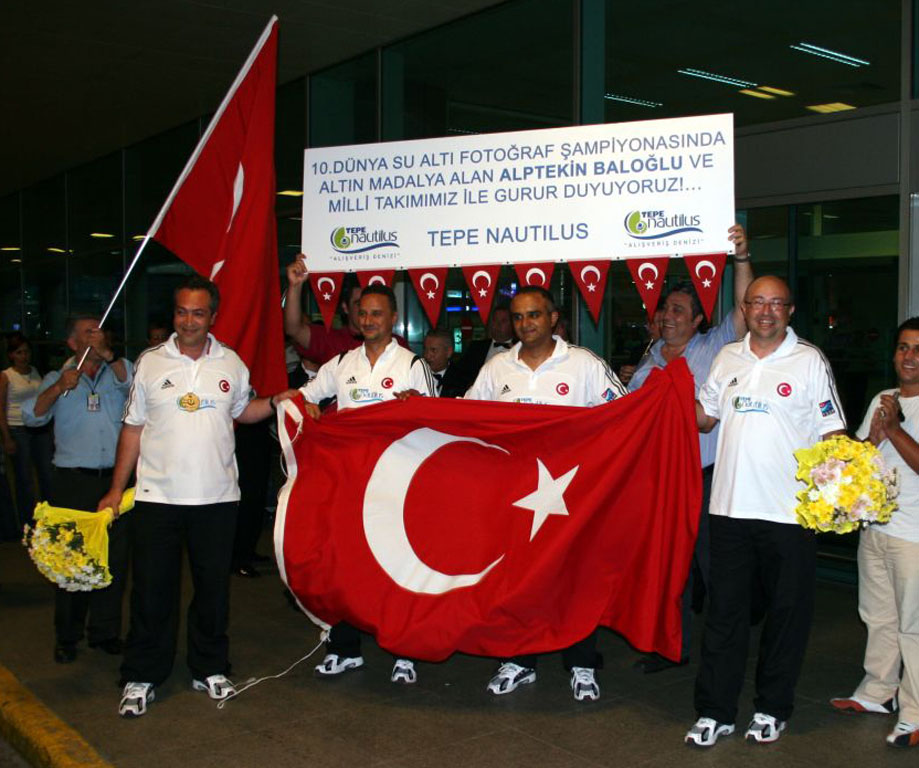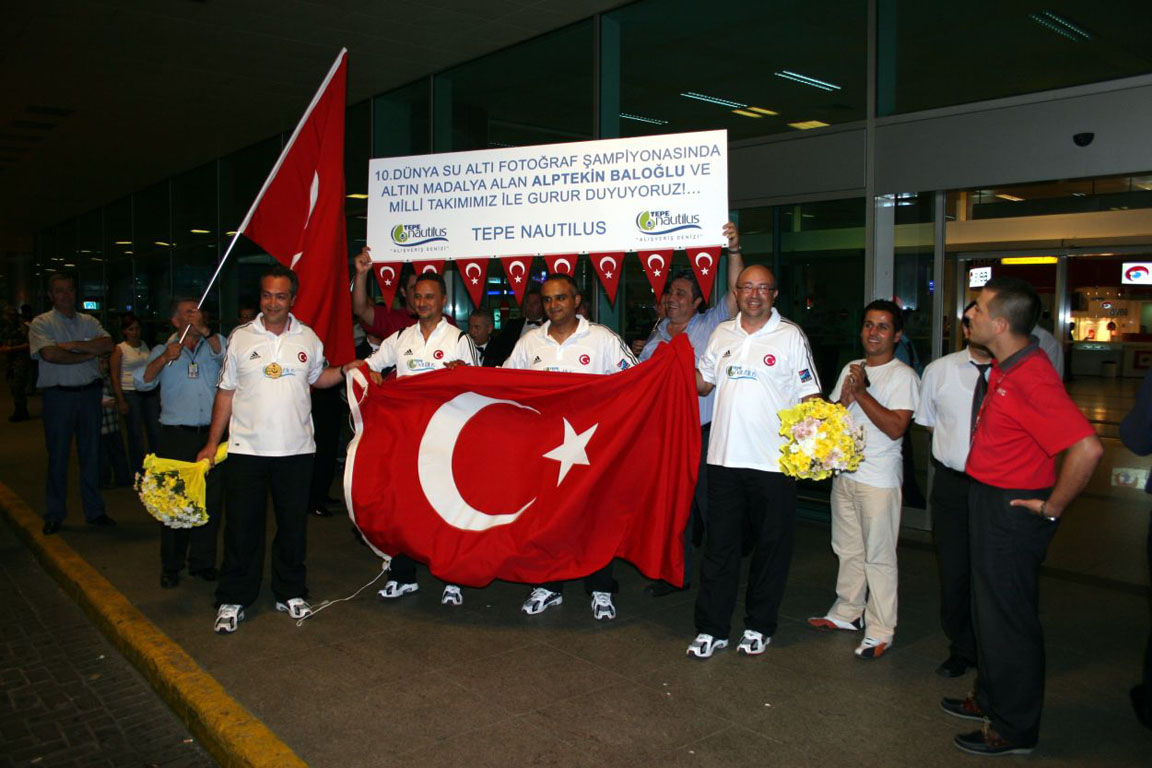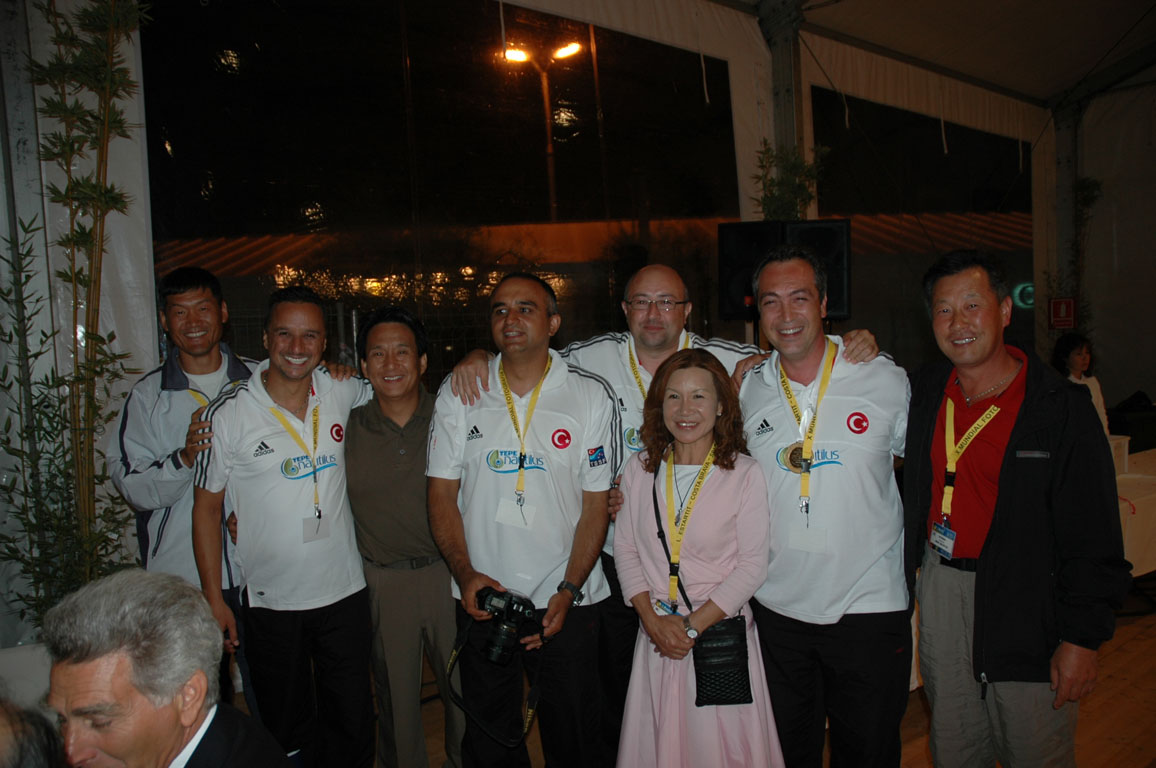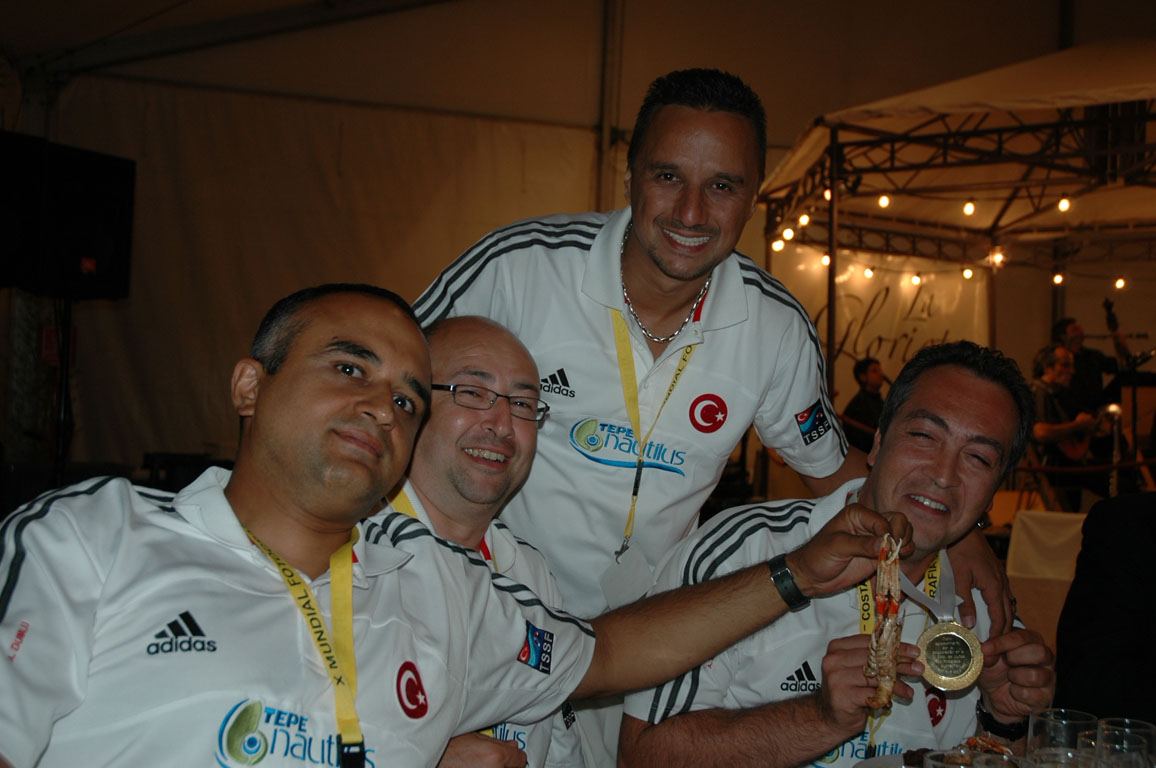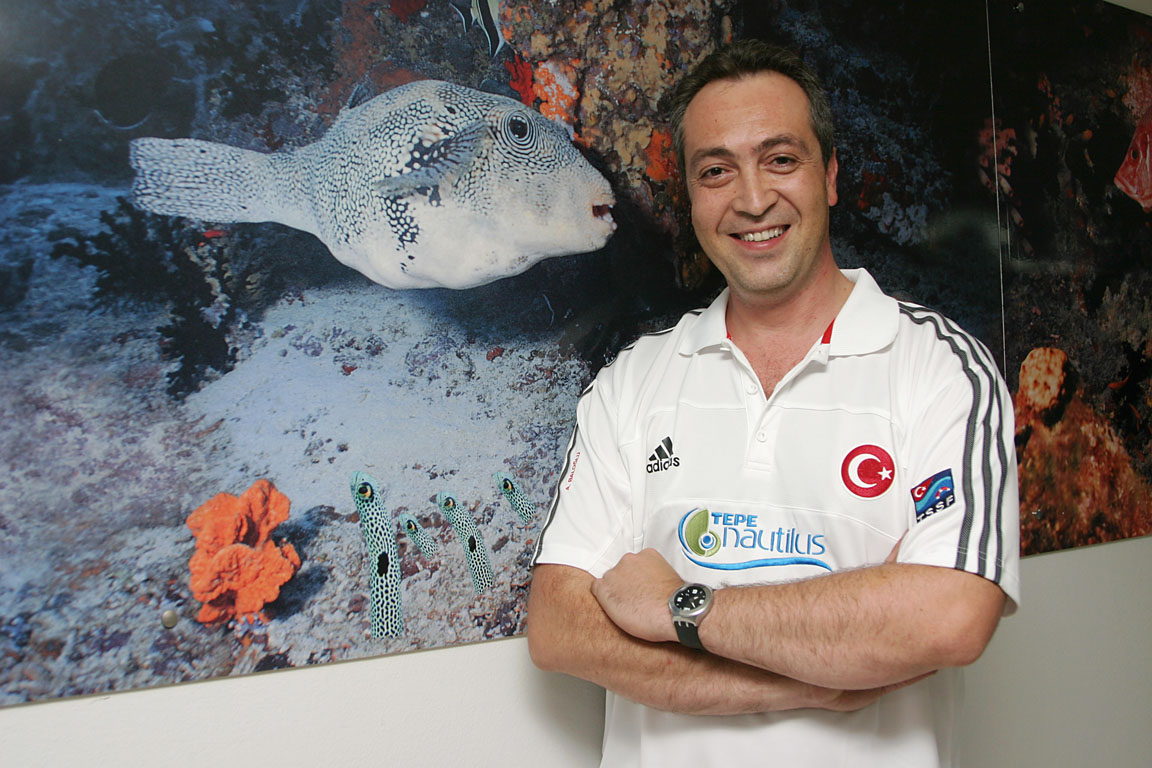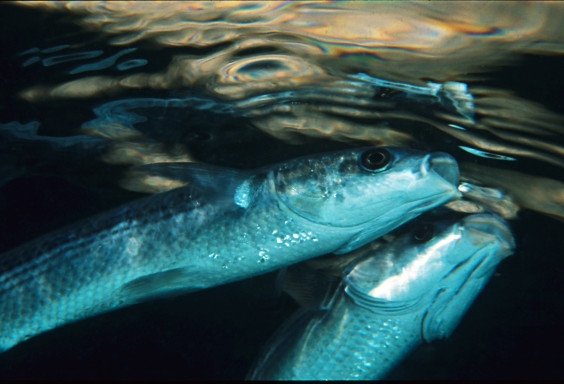I would like to thank all underwater lovers who congratulated by phone and e-mail, and came to welcome me to the airport for the Gold Medal that I won in the category of Fish in the 10th
Underwater Photography World Championship in Spain.
Dear Friends,
I would like to thank all underwater lovers who congratulated by phone and e-mail, and came to welcome me to the airport for the Gold Medal that I won in the category of Fish in the 10th Underwater Photography World Championship in Spain.
Dreams create goals; having a goal is half way to success, and the rest is faith. For many years, I have dreamed of participating in an Underwater Photography World Championship with success.
It may be a bit long, but I would like to share with you the background and afterwards of the championship.
Here is the championship story of Alptekin Baloğlu;
Four years ago, during the Underwater Imaging Contest of UFBAY organized by our Federation, I asked our former president why we did not form a national team to join the world championships. The answers were painful. In summary, he said that there were many good underwater photographers in our country, how they should be selected, and those who were not selected would resent it. Additionally, he said, national teams are responsible for representing the country, so those who smoke or act in defiance of the sportsmanship spirit cannot go as national sportsmen. I was actually upset by the fact that there was no faith in any success in this area, so there was no budget allocated to this, and we did not have any relevant regulations, so the decision-making mechanism was up to a single person’s judgment.
When my book “Stars of Underwater” was awarded as the “Best Underwater Book of the World” in the Underwater Imaging World Festival in France in 2003, CMAS Imaging Board Chairman asked me, “Why does Turkey never join the World Championships? I do not understand how you do not join while there are good photographers like you.” As a man who loves his country, I could not say, “I do not understand it, either,” but said, “Don’t worry, we will come soon,” timidly…
The complaints by me and my colleagues in every UFBAY must have convinced our former president two years ago that he announced the photographers who got the highest points in UFBAY would go to the World Championship as national team. In that UFBAY where I was a jury member, our colleagues Asım and Erkan got the highest points and were selected to the national team, but the World Championship that was supposed to take place in Jordon was postponed by CMAS due to safety issues in the country. In last year’s UFBAY in Saroz, I received 5 medals and Asım Dumlu received 4 medals, which made us national photographer candidates.
Now a new federation was in charge with İnkilap Obruk as the president. The contest calendar included the World Championship in Spain. Our president gave us the good news that a national team would go to the world championship for the first time. Asım and I were diving in our waters to succeed in taking better photos, and the correspondences were continuing with Ankara, but then we were struck by the bad news.
Our federation could receive half the last year’s budget. They said they might not send us to Spain due to lack of budget even though they wanted to.
The only way was to find a sponsor to cover all our expenses, or we would continue diving at home as the history repeated itself. As a team, we met with many potential sponsors to no avail until Nihat Sandıkçıoğlu, the General Manager of Tepe Nautilus Shopping Mall, came to my office and brought up the issue himself. In return for their sponsorship, we were going to open an exhibition with our photographs and allow them to use these photographs. Yes, just a month before the championship, Tepe Nautilus made a decision in three days to support us. It seemed that our dreams would come true.
Now it was time to prepare an official sponsorship agreement between Nautilus and the Federation. It was the first time that our Federation received sponsorship for a group to travel abroad, and was going to make a contract. In one month’s time, I spent every day in negotiations for this agreement, in which time I found out how troublesome it was to work with the bureaucratic mechanism, and how much easier it was to do nothing than to put all these efforts. It was the reason why we had not been able to go to the world championships for years. Yes, it was too challenging, but we needed to be undaunted by the challenges to overcome them. While struggling to solve the troubles that we faced every day, I learned many things, as well, the first of which was that our Federation definitely needed to be autonomous…
In the meanwhile, I was trying to delay the payment through daily correspondences with Spain. The agreement was ready one week before we left. And the fees for the contest were wired to Spain eventually. We had applied for visa, and completed all our technical preparations. When we received our passports back from the Spanish Consulate, we were shocked to see that our visa request was declined. Our plane was leaving in two days. It was such a difficult task to go to a championship to represent our country and to seek success… The reason why we could not receive a visa was the absence of the copies of three pages of our passports, which was not listed in the list of necessary documents! They already had the passports, they knew that we were going to the world championship, but instead of making photocopies of those passport pages, they sent the passports back to us, and we had two days left to receive a visa. We thought that the Spain team, intimidated by us, had set this up, and I asked for help from Spain. They called the consul, and a miracle happened; we received our visa at 6 p.m. that day on Wednesday, and took off on Thursday morning. I felt that I had aged two years over the past month, but let it be so, they say age comes with experience…
What I have shared so far is how our team struggled through many hardships and challenges almost miraculously in great faith. I do not aim to criticize any person, not at all, because the problem is not with individuals, but with the difficult functioning of the mechanism.
It is our responsibility to learn about and improve these problematic circumstances; we do not have the luxury to avoid the difficulties and just give up.
Let’s go to the part that was most entertaining and wonderful for us.
10th UNDERWATER PHOTOGRAPHY WORLD CHAMPIONSHIP, L’Estartit – Spain 2005
When we arrived in Barcelona at noon on Thursday, we had another surprise. No one was there to pick us up at the airport due to the wrong information! given to the organization committee; it was noted that two members of the team would arrive on Thursday, and the group head would come on Tuesday, and the Tourism office had cancelled our transportation. After our phone calls, we waited for three hours in the airport for a new vehicle that would take us to L’Estartit that was two and a half hours away. We waited, and when the vehicle arrived, under a torrential rain the like of which I never saw in my life, thunders like bombings at war, and flashing lightning, we put our equipment of 500 kg in the vehicle, and hit the road, soaking wet. We learned from the driver that life in Barcelona was struck by hurricanes and storms for two days.
When we arrived in L’Estartit, the weather was clearing up, and we could reach one of our most favorite things in life, the sea… Now we only needed to focus on the championship, diving and taking photographs in the water where the contests would take place.
It was the reason why we went there 5 days before the contest. It was not only us who thought like that; many other countries had come earlier and already started diving.
The Spanish Federation had really organized the event very well; everything went according to the schedule without a hitch. After the briefing and dinner, we prepared our photography equipment and went to bed. The next morning, we went to the port for the first diving. L’Estartit is the perfect town for diving tourism and diving organizations.
Located a mile off the coast, Medes Islands is a heaven for diving. The back platforms of the boats are equipped with a hydraulic system that pulls the diver out of the water right into the boat without any climbing. In a modern port, diving boats are allotted a separate place. Tubes are not filled in the boats, but all boats have the tubes filled in a common filling center. After the first diving in the morning, the boat returns to the port, and departs one and a half hours later for the second diving. In the meanwhile, you can eat and rest. There are a total of 13 diving centers, but each has two or three boats.
We set off for our first diving with the Spanish, Slovakian, Swedish, and Norwegian teams. When we jumped into the water, we were surprised to see that although the visibility was poor due to the rain, the underwater diversity was incredible. When I came within an inch of a one-meter grouper in my first dive, I forgot about taking photos and began to watch it. I had never taken photographs while my dome port touched a grouper’s nose. After I shot ten frames, I and my assistant Birkan Babakol left the fish behind and moved on. At the point where we saw the yellow-red gorgonians on big boulders, I noticed that the same grouper had followed us like a dog, trying to pose for me. Certainly, I did not say no… When we arrived at the shoal, I saw hundreds of two-banded sea breams, leer fish, and brushtooth lizardfish, which made me certain that Medes Islands were the Red Sea of the Mediterranean.
For our second diving, we went to a very nice cave, La Vaco, where a regular giant grouper holds the door, and the light plays nice tricks for the photographers, a heaven with shoals of fish and walls covered with soft corals towards a separate exit at the end of the cave…
The first day’s diving proved that the Spanish chose the right spot for the championship. Diving in Medes Islands had both surprised and frustrated me.
Before this spot was declared as a National Park 12 years ago, gigging had caused great damage in the area. The state decided to take this spot under protection and create a tourism region, and after years of zero-concession, an amazing diving point has indeed been created. Three main zones are formed around the islands. The largest circle indicates the limit where the fishermen can get closest. The second circle is for the boats of snorkeling, and the smallest circle draws the boundaries of divers. Each zone is marked with plenty of buoys, which enables the boats to stop without anchoring. Hundreds of buoys of different colors mark these zones. When I saw all these works, which they undertook 12 years ago and we were just beginning to discuss, I was getting more and more frustrated. The investments are returned many times more since there are 13 diving clubs in service and each diver is charged 3 euros in protection fee, and every diving club hosts nearly a hundred divers at the weekend, so the system is obviously a success.
After a short tour of the town in an end-of-the-season calm, we left our slides in the small photo studio where all teams’ photographs are developed, and returned to our hotel.
It really improved our work to see the technical errors in our photographs, take our lessons, and put them into practice in the following day. Once again, thanks to our sponsor Tepe Nautilus… The Swedish team had come a week earlier than us, and the Italians stayed in a different hotel and hired their own boat to work comfortably and out of sight, which indicated how seriously they took this tournament.
The preparatory diving was over, and the official opening day of the championship had come. The teams began to get registered at the table of the CMAS authorities and officials from the Spanish Federation. When it was our turn to get registered, we presented elegant blue beads, mixture of weaving and cast, with Turkey written on them, to Christina, who had called the Spanish consul regarding our visa procedure, and other officials. They were happily surprised. When they saw and tasted the Turkish delights we offered, they had figured out that we were a warm team.
Before the opening ceremony, they explained the rules to us in detail. We returned to our hotels and prepared for the ceremony. A large and portable tent was built with a stage in front of it. All teams joined in the parade with their flags in name order. When we appeared in the last place, everyone was applauding and murmuring within themselves. Certainly, they were talking about not how handsome we were as a team, but how very stylish were the uniforms prepared by Adidas for the whole team. Thanks you, Adidas, we showed the dignity and quality of a first-timer team altogether…
The championship started after the opening ceremony and the cocktail.
The points of diving were determined for all teams on the first day. We performed test diving in two out of these four points, and thus ended the first day. We presented all teams with the blue beads as gifts. We explained to them about the evil eye and the protective charm of the blue beads in Turkish culture, and wished them all the best of luck. They were all surprised and thankful. They were thinking, “Those Turks are weird, they also join in this contest, but wish us luck!” But even this little gift was enough to bring us close quickly.
Like every morning, we got up at 6 a.m., checked our equipment while waiting for the sunrise, had our breakfast, and drove to the port in the bus that picked all teams from the hotel. I took the two rolls of film that we would use that day from the organization committee, and took a picture of my assistant Birkan Babakol and the boat captain. We settled in the boat, and reached that beautiful cave of La Vaco, our first destination. When the boat stopped the engine, the boat captain blew a whistle to notify that it was 10 minutes to the diving. No one was supposed to start diving before 10 minutes, but those who were ready could wait in the water. There were Egyptian, Italian, British, Slovakian, and Chilean teams in our boat. Thus, 12 photographers and 12 assistants were going to dive at the same point at the same time to take photographs. Because we had dived at this point before, I knew where I would take the photograph I had imagined. The diving whistle started the race to the cave. The Italian had beat me to the wall of the gorgonian corals at the exit of the cave. He placed his model, and started to work. I waited without entering his frame, but I had no intention of leaving. Birkan was expecting my signal near the model, but there was nothing to do. At that moment, I knew what to do. I positioned myself behind and lower the Italian, and began taking photos of the corals using his model… Turkish intelligence…
Seeing that I could not take the shots I wanted, I went near the boulder in the middle of the exit of the cave, and I was face to face with a large grouper, which was a good theme, but everywhere was crawling with models. Asım had placed his model Fikret and was working, but the Italian’s model kept kindly reminding Fikret that he was entering his frame, and Fikret was responding that it was them who entered the frame, pointing out to his photographer down there. It was being a nightmarish diving with such small arguments.
I finished my first roll with 16mm fish-eye lens in 40 minutes, and we were about to complete this stressful and not-so-successful diving. Birkan and I left the cave for the boat. If we found a nice macro object, we were going to take my ready housing from the boat and dive again. On our way back to the boat, we entered another cavern, and after swimming for twenty meters, we saw a pretty, pale orange shrimp in a hole. That’s it, we said, and went to the boat swiftly to get my second camera, and returned to the cave. But the shrimp was no longer there, as usual…
We decided to surface after leaving the cavern. From 15 meters we were slowly ascending when I saw the same shoal of grey mullet I had seen before the dive. They were feeding in the surface shade. I took a snap decision, and signaled Birkan to stay away.
My camera was equipped with a 105 mm. macro lens. I positioned the tandem flash lights suitable for wide angle posing, and because the window appeared bright, I turned them down semi power and selected the instant 1/125 with aperture value of 13. I was practically prompt to shoot, and scanned the scenery for the apt frame I intended.
I realized at that very moment horribly that the bubbles I produced as I breathed into the water would have rushed up and disturbed the serene shoal. I felt obliged to hold breath until I shot. Grey mullets, moved back and front, mouths open sweeping the planktonic prey. I had exercised all summer long in my private pool for the application of surface reflection and now it was high time I had used the experience. Consciously I posed 8 frames of my 36 roller, pacing then down and saving the rest for the next dive. I signaled Birkan again that I was done and surfaced back safe and sound. This is the story of the photograph, out of other 50 photographers, that brought me the gold medal.
In the lunch break, an assertive photographer from the Swedish team came to us. Seeing that I was using the Sea and Sea YS 120 flash, he said the back cover of his flash was broken, and asked if I had any spare. I had three housings, 6 flashes, and many spares, so I said, yes, I did. He asked if I would sell him one, but I said, no. When I saw his expression, I did not want to upset him anymore, and said, “No, I will not sell it, but I will lend it to you to use during the contest.” He was thrilled. How could he not be? Otherwise, he would be left with a single flash in the first day of the world championship. This had reinforced the friendship of Turkish and Swedish teams.
Our second diving would be a macro diving where I could properly use my remaining 28 frames. Our plan was set for that diving, too. We were going to go to a boulder that we had found in our test diving, and shoot only the nudibranch. We had seen ten-fifteen nudibranchs laying eggs on this boulder two days ago. Soon we found the nudibranch station. There were few nudibranchs, and the currents made it difficult for me to work because it was shallow water. When I was about to finish my roll there in half an hour, Birkan told me to look back. A one-meter grouper had been watching me for a long time half a meter away from me. We came face to face when I turned my back, and I took only one souvenir photo, and then caressed it away. Our first-day diving was over. We went back to the hotel, exhausted. Now we only had to wait in excitement for our developed films that we would receive at 11 p.m. While we were waiting in the hotel lobby like everyone else and I was checking my e-mails, Birkan came along with a Brazilian photographer and said “This is the guy,” pointing out at me. It seems that our Brazilian photographer friend, having found out that my book received an award in France, was curious about and tried to order my book online. He had also published a book recently. I gave him the only copy I had with me, and he gave me his book, so we were both happy with this exchange.
The films arrived, and I took a look at them in the lobby. When I saw the photograph that won the award, I said that was it. Asım also took his films, and we went to our room as the whole team. We went through our frames on light tables, gave technical criticisms to each other, and discussed our strategies for the following day’s diving. My wide-angle photographs were not good, and I had no macro photograph. My nudi and fish photographs were sufficient. It was decided. The first diving point was good for macro. I put macro lens on both of my cameras, 60 mm and 105 mm.
We went on the first diving where we aimed at finding the shrimp in the anemone that we had seen at this spot before. As Birkan and I were searching like macro detectives, we spotted a hermit crab. Here is the competition stress; while I had come across such a beautiful object, I took only two frames not to finish my films because what I had in mind was to work with that gorgeous shrimp. We searched in the spots that we had seen before for minutes, and we found about ten anemones, but no shrimp. Asım and Fikret were also looking for the shrimp at the same spot. Asım found a shrimp, but it was too small, not as large and aesthetic as the one I had seen before. He worked first, and then I worked with the same shrimp, but it was so small that it could not give any aesthetical photograph. I kept looking to no avail. We went up on board 85 minutes later without having taken the shots that I wanted…
We began to prepare for the second diving. I was going to set one camera for wide-angle, and the other for macro. Our plan was set. There were anthias fish and colorful gorgonian on the wall to the west of the diving point; I was going to take wide-angles without a model there, and then we would head east where I would shoot a composition of corals, grouper and the model.
If I saw any macro on the way, I was going to use the 60 mm. We did all our preparations, and as we were going down to the boat, Ramon from Costa Brava diving center, with whom we had a very warm dialogue, said there was a boulder starting at 25 meters below the boat buoy with plenty of corals, and this changed our plan. We were going to dive into that boulder first, and then carry on with our plan.
I went down into the water first, and tied both cameras to my wrists. Then Birkan came, and the diving whistle blew. While Birkan was trying to take the macro camera tied to my wrist, I said, let me give it to you. Right at that moment, there was a confusion, and Birkan could not hold the camera when I took it out. I was not aware of that. It was an unforgettable scene when I suddenly realized that someone was trying to swim down rapidly alongside me. The housing was going down with Birkan following it, and me following them both. I was constantly checking my wrist watch. It was a rapid dive into unclear water and indistinct bottom. We were afraid that it would fall below 35 meters, which was the limit of the competition. Thankfully, the water was 27-meter deep. The camera hit the bottom hard, and also hit an eagle ray, which ran away swiftly. As Birkan took the camera, I tried to shoot the corals at 34-meter depth for the non-model wide-angle. Then we began to swim up, and reached the wall of our initial plan at 20-meter depth. As I shot one or two frames, I saw Fikret, so Asım was also working there. When I saw that it was all blurry, we moved on to the boulder where the grouper would be. After swimming for a long time, I found the boulder that I was looking for. After a brief waiting, our actual model, the grouper, agreed to be with me. The white-light torch in my hand was its favorite. I put Birkan at 18 meters, and shot all my wide angles at 25 meters, just when I realized that there were two more groupers right behind us, but it was too late. We were at risk of deco, and had little air left, so we ascended swiftly. When we were performing our safety deco at 5-meter, I had seen that the camera went from auto-focus to manual, but could not even focus manually. The competition was over for me…
We received the photographs in the evening, and made our selections for each category. We cut and cassetted our selections in front of the organization at 8 a.m. Now it was the jury’s time.
AWARD CEREMONY
This year, CMAS went for a different practice. Firstly, they scored 50 photographs and eliminated all but the top 10 in each category. In the award ceremony, the actual scoring was performed open to the public. In this ceremony attended by all contestants and hundreds of people, the photographs were projected on a giant screen for each category. The first category was the fish, and I had my name among the 10 photographers on the screen. The excitement had begun. The scoring system was as follows: The photograph remained on the screen for 30 seconds, with the name, country and national flag of the photographer on the next screen. Below were 7 different jury flags. Each jury member entered the score between 1 and 10 into the Omega computerized system, which deleted the highest and lowest numbers, and calculated the sum of the scores given by the remaining 5 jury members as the contestant’s score. When my photograph was on the screen in the 5th place, those 30 seconds dragged on. The crowd murmured and applauded, as it was a very different photograph than the ones shown so far. The composition of two grey mullet feeding together with the reflection of the water surface had already gotten the highest score from the jury. It was the turn of the sixth photograph. We passed half a minute, hoping that it would be scored under me, and Asım said, “Bro, you are going to be the number one, I know it!” After the eighth photograph, Birkan said, “Don’t get nervous, at least we guaranteed the bronze medal,” as my heart stood still. When the last photograph was scored under me, first Asım and then I uttered a big scream of joy. Here was Turkey, winning a GOLD MEDAL in a World Championship in the first attendance. It was one of the happiest moments of my life.
The same process of evaluation operated in other categories, too, but neither I nor Asım could make the top ten in other categories. Yet, we had learned big lessons. The World Champion was Italian Denis Palbiani, who received one bronze medal, and ranked the 10th, 8th, 5th, and 7th in other categories, which earned him the World Championship because he had collected the highest score in total. It taught us the importance of taking technically successful photographs in every category even if not the best. I hope that what we learned will usher in greater accomplishments in the years ahead.
After the award ceremony, an elegant dinner was organized in the large tent. Our table had the Italian team, the Chilean team, and us. Delicious wines accompanied tasty food, Catalan music and folk dancing. Our friendship with the Italians improved at the table. The President of the Italian Federation said they were planning to organize a return championship in Sardinia, Italy in the following year, and invited me to this organization that would be attended by medal-winners only. The teams from Russia, Norway, Sweden and Egypt invited us to the festivals in their countries. Many photographer friends came to our table to take our pictures taken together, and congratulated me on my photograph that was so unusual and beautiful. Their common statement was this: “It is daring even to imagine taking this photograph. You both showed the courage and technical ability to turn this idea into a beautiful photograph. None of us had thought of this. Congratulations!” Hearing those words meant so much to me as the gold medal.
The French jury member, who had asked me in France why Turks never joined the World Championships, as I mentioned at the beginning of this piece, congratulated me saying, “You had told me in the Antibes that Turks would join the championship soon, but you never told me that you were going to win a gold medal,” expressing that he remembered me and that day. It was also a memorable congratulation for me.
Our table of Turks and Italians was, of course, the most fun table of all. I even have a recollection of dancing the halay in the middle of the tent with a shy photographer like Denis Palbiani, whom Asım and I took between us before he knew what was going on…
THE END… BUT WE GAINED SO MUCH
This world championship that we attended for the first time was a success in many ways. Now there are the criteria to form a national team, and successful photographers will be able to become national photographers in line with these criteria. Our federation signed an official sponsorship agreement with a sponsor for the first time. Our sponsor Tepe Nautilus Shopping Mall saw that it was a right sponsorship decision to believe in us, constituting an example and inspiration for other sponsors. I and my country won a gold medal. We met the world’s best 50 underwater photographers, and developed great relationships. We told about the beauties of Turkey’s waters to all of them as well as the unique quality of archeological and wreck diving, accomplishing an important role as tourism envoys. We gained valuable strategic information for the next world championship.
We got more ambitious to improve ourselves and take better photographs, and proved that it was not a distant dream for many underwater photographers to achieve success in the world championship as members of the national team. As it was played by the band that was brought to by our friends and relatives who welcomed us at the airport: “It was a glum departure, but a merry arrival.”
ACKNOWLEDGEMENTS
Turkish Underwater Sports Federation; Tepe Nautilus Shopping Mall for believing in and sponsoring us; Kuartet for establishing the contact for this sponsorship; Adidas Turkey for preparing our dressing free of charge; Turkish Airlines for not charging any fee for our extra baggage of 500 kilos; Marintek for providing us with discounted diving materials; Exit Turizm for their support in the preparatory diving in Turkish waters; Bubble Club; Aquapro Bodrum; Erman Dive Bodrum; Arşipel Kaş; my girlfriend Nathalie Beuret for her constant support; my business partner and brother Alparslan Baloğlu for sending me to diving and undertaking all the burden at A4 Ofset while I was away; my parents Gülten and Ekrem Baloğlu for their heartfelt prayers; Birkan Babakol who is the best assistant diver of Turkey and my right hand under the water; and you…
Endless thanks for all your support that made dreams come true…
